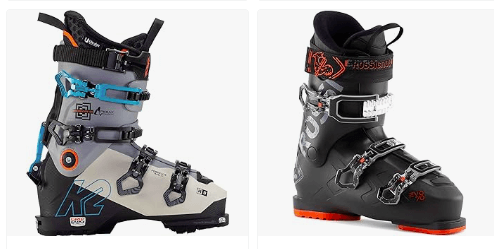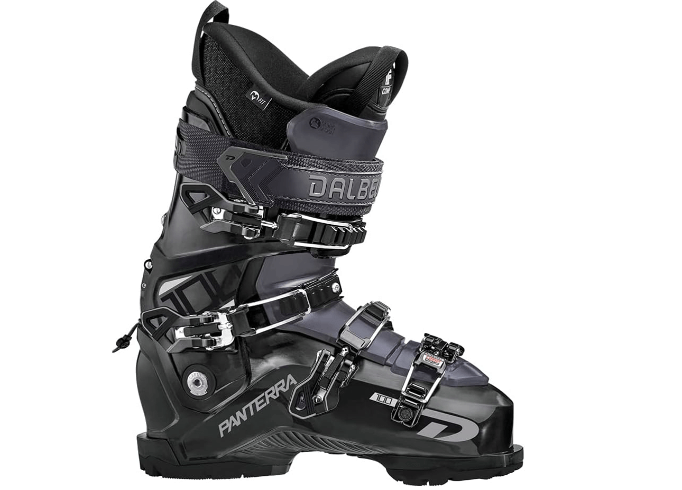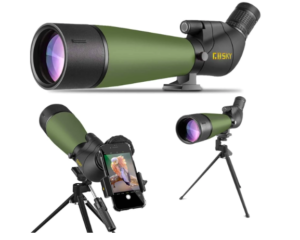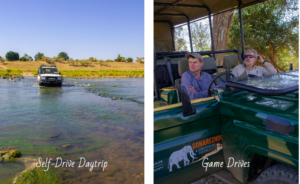
When do ski boots go on sale in shops and online?
When it comes to skiing, your gear is your entry point into the realm of winter fun. Ski boots are one of the most important pieces of equipment. They are the direct link between your body and the mountain, the exact tools that convert your actions into beautiful descents or thrilling turns. Finding the right pair of ski boots, as every skier knows, is a trip that combines comfort, performance, and fit, and it’s a quest that’s frequently accompanied by the eternal question: new or used? In this look at ski boot sales and the world of secondhand ski boots, we’ll uncover the vast array of possibilities accessible to winter sports fans.
When do ski boots go on sale?
Ski boots are frequently on sale at various times of the year, usually in accordance with a seasonal cycle and promotional periods. Here are some of the most typical times to find ski boots on sale:
End of Winter/Early Spring (Late February to March):
As the winter ski season draws to a close, many businesses begin to liquidate their winter sports inventory, including ski boots. This is an excellent time to get deals on current season models as they make way for next year’s gear.
Fall Pre-Season Sales (September to November):
Many ski shops and athletic goods retailers offer pre-season deals and promotions just before the ski season begins. There are savings on previous year’s models as well as early-season reductions on the current equipment.
Cyber Monday and Black Friday (late November):
During the holiday shopping season, many things, including ski boots, are heavily discounted. Look for Black Friday and Cyber Monday sales from both online and traditional businesses.
December Holiday Sales:
There are several Christmas deals and promotions throughout December. Discounts and package offers that include ski boots, bindings, and other skiing gear are frequently offered by retailers.
Seasonal Clearance (April to May):
Retailers may offer clearance sales around the conclusion of the ski season to clear away any remaining inventory. This is a fantastic time to get significant savings on ski boots, especially if you’re looking to buy gear for the next season.
Special Events and Promotions:
Keep a look out for ski expos, trade exhibits, and events at local ski shops. These events frequently include unique offers and promotions on ski equipment, including boots.
Online merchants:
Because online ski stores may provide discounts and offers all year, it’s worth checking out different online platforms for bargains and comparing costs.
It’s vital to keep in mind that the availability and timing of ski boot sales can vary based on your area, local ski stores, and the precise brand or model you’re looking for. To find the best bargain, compare prices, sign up for ski store emails, and follow your favourite companies on social media to stay up to date on deals and promotions.
Is it okay to buy second hand ski boots?

Buying used ski boots might be a good alternative if you’re on a tight budget or new to skiing and want to test the waters without making a large financial commitment. However, there are several crucial factors to consider and potential downsides to keep in mind:
Advantages of Purchasing Used Ski Boots:
Savings on costs:
Second-hand ski boots are often less expensive than new ones, which may be especially enticing to novices who are unsure if they will continue with the activity.
Older Models Are Still Available:
If you prefer a model that is no longer in production or are seeking for a certain style, you may find it simpler to discover it in the second-hand market.
Excellent condition:
Some secondhand boots may be gently used, well-maintained, and in outstanding shape, making them an affordable alternative for skiers looking for dependable gear.
Cons of Buying Used Ski Boots:
Problems with Fit:
Ski boots must be properly fitted. Used boots may have adapted to the former owner’s foot shape and posture, causing you discomfort and decreased performance. Ski boots should ideally be custom-fit to your specific foot form.
Wear & Tear:
Used boots may show evidence of wear and tear, such as damage to the lining, straps, buckles, and soles. Excessive wear can have an impact on the boot’s performance and longevity.
Concerns about safety:
Older ski boot models may lack the safety features and technology featured in contemporary boots. Skiing safety is crucial, and old boots may not give the same level of protection.
Concerns about hygiene and sanitation:
The former owner’s germs, fungus, and disagreeable odours may be present in used ski boots. Before using used boots, they must be carefully cleaned and disinfected.
Warranty is limited:
Second-hand ski boots, unlike new boots, usually do not come with a warranty or guarantee, which means you may be out of luck if you have difficulties.
Tips for Purchasing Used Ski Boots:

Here are some things to think about if you decide to buy used ski boots:
Ensure a Good Fit:
Get your feet measured by a competent boot fitter, and then seek for secondhand boots that are as near to your foot shape and size as feasible.
Examine the Boots:
Inspect the boots thoroughly for evidence of breakage, wear, or abnormalities. Take note of the condition of the liners, as well as the buckles, straps, and soles.
Inquire About Usage:
If possible, find out how frequently and for how long the boots were used. In general, lightly used boots outperform excessively used boots.
Cost and quality:
Compare the cost of secondhand boots to their quality and condition. It may be worthwhile to spend a little extra money on boots in better condition.
Sanitization:
After acquiring used boots, properly clean and disinfect them, especially the lining, to eliminate any potential hygiene risks.
While used ski boots might be a cost-effective choice, it’s critical to prioritise safety and comfort. Consider renting or purchasing a new pair of entry-level ski boots if you are a novice. Consult with a boot fitter if you are a more experienced skier to ensure that any secondhand boots you acquire may be customised for your feet.
Why do my ski boots hurt so bad?
Various causes might contribute to ski boot discomfort or pain. It is critical to pinpoint the source of your discomfort in order to successfully address it. Here are some frequent causes of ski boot pain:
Inadequate Fit:
An incorrect fit is the most prevalent cause of ski boot pain. You are likely to encounter pain if your boots are excessively tight, too loose, or have pressure spots on your feet. Ski boots should fit snugly but not too tightly. Consult a skilled boot fitter to verify that your boots perfectly match your foot shape and size.
Inadequate Sock Selection:
Wearing incorrect socks, such as thick or many pairs, might result in pressure points and pain. For maximum comfort, ski-specific moisture-wicking socks are advised.
Liner Issues:
Liners can get worn or packed down with time, resulting in decreased comfort and support. This problem can be alleviated by replacing or updating the liners.
Buckle or Strap Tightness:
Excessive tightening of the boot’s buckles or straps might result in pressure points and pain. Adjust the buckles and straps to your liking and the individual needs of your foot.
Inappropriate Boot Flex:
Ski boots have variable flex ratings, and choosing the incorrect flex might cause pain. A stiff boot can create weariness and pain in less experienced skiers, while a soft boot may not give enough support for skilled skiers.
Pronation and foot shape:
The fit and comfort of your ski boots can be affected by your foot shape and pronation. To suit their particular foot anatomy, some skiers may require special insoles or boot changes.
Injuries in the Past:
Previous injuries or anatomical abnormalities in your feet, ankles, or legs might lead to ski boot pain. Seek the advice of a boot fitter to address these difficulties and make the required changes.
Cold Feet:
Cold feet may make skiing boots uncomfortable. Make sure you’re properly attired with warm socks and apparel. Heated insoles or ski boot warmers can also assist keep your feet toasty.
Period of Use and Break-In:
New ski boots may need to be broken in before they are comfortable. If your boots are brand new, they may require some time to mould to your feet. Skiing longer and longer sessions can aid in the break-in process.
Inadequate Boot Maintenance:
Neglecting to maintain your ski boots, such as keeping them clean, properly drying them after use, and ensuring buckles and straps are in excellent functioning condition, can result in pain and decreased performance.
If your ski boots hurt you must see a professional boot fitter. They may evaluate your fit, detect problems, and make changes to create a comfortable and personalised solution. Remember that pain in your ski boots might ruin your skiing pleasure.
How do you break in ski boots fast?

Breaking in ski boots fast can be difficult, but there are several techniques you can employ to speed up the process while ensuring your boots grow more comfortable without causing harm. Here are some pointers:
Professional Boot Fitting:
To guarantee that your ski boots are the correct size and form for your feet, see a certified boot fitter. They can make unique changes to the liner and shell of the boot to relieve pressure areas and enhance overall fit.
Heat Molding:
Many new ski boot liners may be heated and moulded. Boot fitters may heat the liners and mould them to the contour of your foot using special equipment. This procedure considerably shortens the break-in period.
Custom Insoles:
Replace the original insoles with bespoke orthotic insoles created specifically for your foot shape and biomechanics. Custom insoles can improve comfort and support while shortening break-in time.
Wear Them at Home:
Before travelling to the slopes, walk around the house in your ski boots for a few minutes. Begin with simply an hour or two every day to let your feet adjust to the new footwear.
Walk Around:
Practise walking in your ski boots at home or at the ski resort. This allows your feet to become used to the restricted mobility and discomfort. Avoid walking on hard surfaces for long periods of time.
Flex the Boots:
Flex your ankles and knees in the boots frequently while sitting or standing to help them soften and adapt to your motions.
Warm the Liners Up:
Warm up the lining of your boots by placing them in a warm environment or using boot dryers. Warm liners are more malleable and soft, making them more pleasant to wear.
Make use of Boot Dryers:
Boot dryers not only keep your boots dry, but they may also slightly warm the lining, making them more pleasant to wear.
Loosen the Buckles:
Unbuckle or loosen the boot buckles and straps while not skiing. This relieves strain on your feet and helps them to adapt to the contour of the boot.
Gradually increase your skiing time:
Don’t overdo it on your first few days on the slopes. Increase your skiing time gradually to allow your feet and boots to adjust at a controlled rate.
Examine for Pressure Points:
Keep an eye out for any pressure points or regions of pain. If you discover any hot places, take them to a boot fitter to get them adjusted.
Think about gel pads and boot fitting aids:
During the break-in period, gel pads and boot fitting aids can assist relieve pressure spots and pain.
Keep in mind that everyone’s feet are unique, thus the break-in period for ski boots may vary. Be patient and take your time to guarantee a correct fit and a comfortable skiing experience. Rushing the procedure might result in pain and discomfort.
Related






